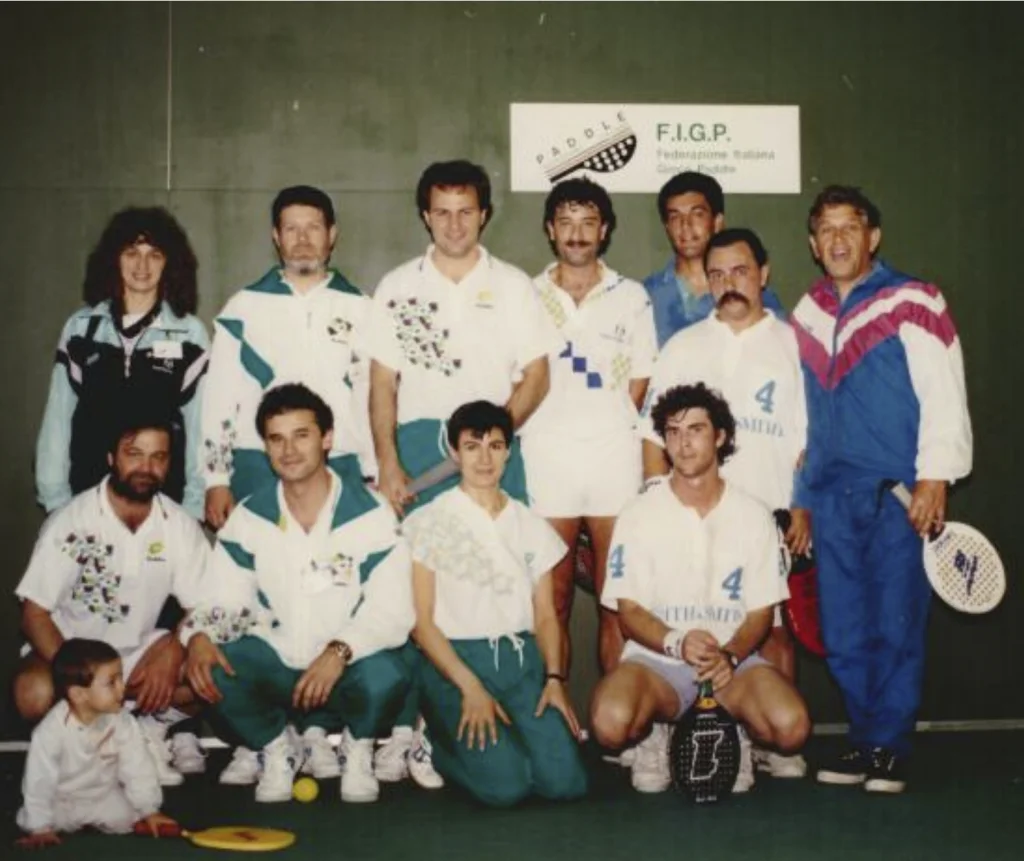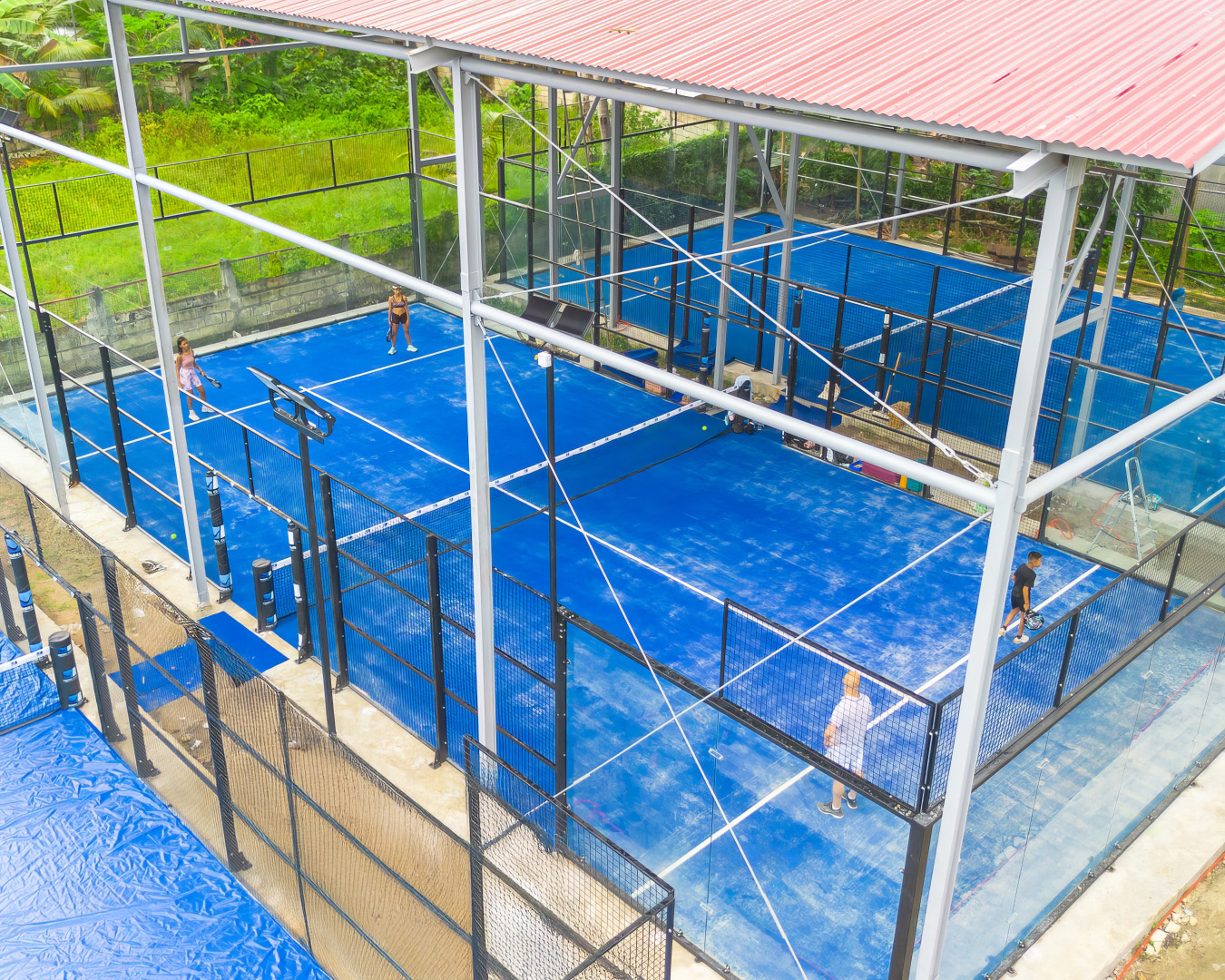
There’s a reason padel is making headlines, booking courts, and filling clubs all over the world.
This fast-paced racquet sport is fun, social, and seriously addictive. Played in doubles on an enclosed court, padel combines the best of tennis and squash, adds a modern twist, and wraps it all up in a format that’s easy to learn but hard to stop playing.
No wonder the International Padel Federation (FIP) calls it one of the fastest-growing sports in the world.
Whether you’re here because you’re padel-curious, scouting your next obsession, or finally figuring out the difference between padel and pickleball, you’re in the right place.
What Is Padel?
DefinitionPadel is a racket sport played on a smaller, enclosed court with glass walls and mesh fencing. The rules are similar to tennis, but with a twist: players can use the walls, leading to longer rallies and unexpected rebounds.
It’s always played in doubles, and the vibe is more “competitive picnic” than intense matchpoint showdown. Expect laughs, strategic gameplay, and lots of quick movement across the turf-covered padel court.
The ball used? A slightly modified tennis ball.
The padel racket? Solid, stringless, and built for fast reactions.
You serve underarm, the ball bounces, and the game flows quickly, making it perfect for players of all ages and skill levels.
A Quick History of Padel
HistoryThe First Padel Court (1969, Mexico)
Padel was born almost by accident. In 1969, Mexican businessman Enrique Corcuera wanted to build a tennis court on his property, but didn’t have the space. So he improvised.
He built a smaller court, enclosed it with walls, and used modified equipment. The result? A brand-new racket sport that combined the energy of tennis with the angles and rebounds of squash.
That improvised setup became the first official padel court. And the rest is history.
Padel Takes Over Spain and Argentina
Friends visiting Corcuera’s home in Acapulco loved the game. One guest brought the concept back to Spain, where it quickly took off, especially in Marbella and other resort cities.
At the same time, Argentina fell in love with the sport. It was affordable, social, and fun to play padel in clubs, schools, and even public parks.
By the 1980s, padel was no longer a backyard curiosity, it was an emerging sport with passionate players and growing court infrastructure.
The International Padel Federation (1991)
To bring structure and global reach to the game, the International Padel Federation (FIP) was established in 1991. It became the official governing body for the sport of padel, creating rules, setting court dimensions, and organizing international competitions.
The FIP now includes over 70 member countries and continues to promote padel’s expansion across continents.
Padel’s Global Expansion by Region
Europe
Today, Europe is the epicenter of the padel explosion.
- Spain has more than 20,000 padel courts, more than tennis courts in some regions
- Italy, France, Sweden, and the UK are rapidly building infrastructure
- Padel clubs are now common, and tournaments attract thousands of players
Whether it’s a casual hit or a pro-level showdown, Europe is where padel thrives.
North America
Padel is starting to catch fire in the United States and Canada, particularly in urban areas and coastal cities.
- Dedicated padel courts are being built in lifestyle clubs and fitness resorts
- Athletes and celebrities are investing in the sport
- Awareness is growing, especially among fans of other racket sports like tennis and pickleball
Asia
The Asian market is catching on fast.
- Countries like the UAE, India, Thailand, and Japan are building padel courts and launching tournaments
- Interest continues to rise across Southeast Asia, with new clubs opening and local players stepping onto the enclosed courts for the first time
- In the Philippines, padel is gaining ground and Bohol Padel Club is proudly leading the way as the first padel court in Bohol and one of the first padel clubs in the country
With its easy learning curve, social vibe, and tropical setting, the sport of padel is a perfect fit for the Philippines and beyond.
Oceania
Australia and New Zealand are slowly joining the movement.
- Existing tennis facilities are adapting space for padel courts
- With the region’s love of outdoor sports, padel fits right in
Expect to see more courts and clubs pop up as awareness grows.
Africa
South Africa already has a small but passionate padel community, with indoor padel venues and growing tournaments.
Other African nations are exploring development, and international partnerships could help the sport spread further.
How Do You Play Padel?
The BasicsIf you’ve ever picked up a tennis racket, you’re halfway to understanding how to play padel.
Padel is played in doubles on an enclosed court, meaning four players in total. The court is about one-third the size of a tennis court, and the gameplay rewards smart positioning, reflexes, and teamwork, not just brute force.
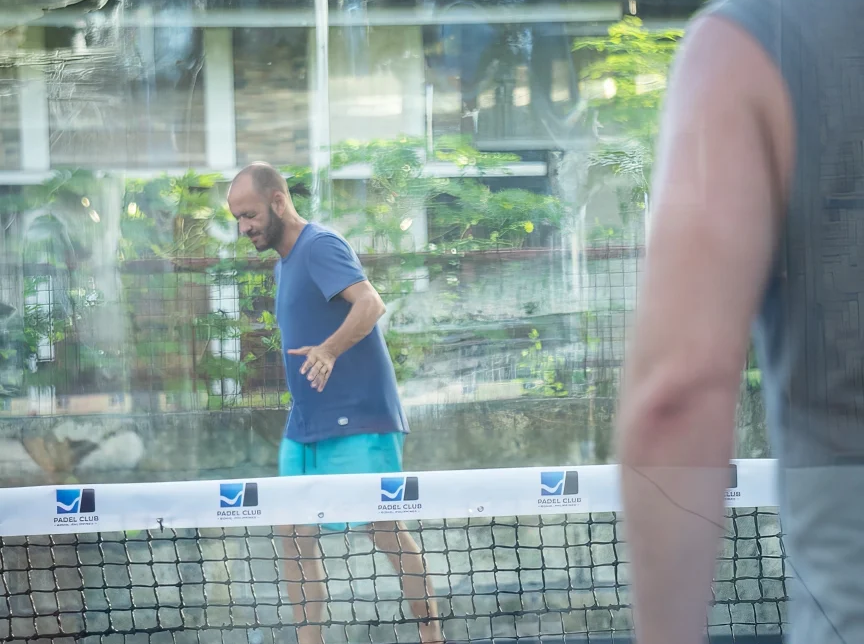
Here’s how it works:
- Serve underarm into the opponent’s service box, just like in padel tennis
- After the ball bounces, players can let it hit the wall and still return it using the side walls or back wall as part of their strategy
- You can’t volley the return off a wall, it must bounce first
- The ball stays in play much longer than in tennis, making for more exciting rallies and fast-paced fun
What makes this racket sport so unique is how it blends the angles of squash with the scoring and structure of tennis, all on a smaller, turf-covered padel court.
Once you understand the basics, you’ll be able to start playing almost immediately. That’s part of the sport’s global appeal, it’s fun on day one, but there’s always room to improve.
How Does Scoring Work in Padel?
ScoringIf you can keep score in tennis, you already know how to score in padel.
- Points go: 15 – 30 – 40 – game
- At 40-40, it’s deuce — win two consecutive points to close the game
- Matches are typically best of 3 sets, with 6 games per set
No extra rules to learn. Just more time spent rallying and less time scratching your head.
Because padel is played in doubles, teamwork and communication are key. Each rally can involve quick net exchanges or strategic lobs that bounce off the glass walls and back into play.
The International Padel Federation governs official rules and scoring for pro events, but recreational matches keep it light, social, and inclusive.
What Does a Padel Court Look Like?
CourtOne of the most distinctive parts of the sport of padel is the padel court itself.
It’s not just smaller, it’s smarter.
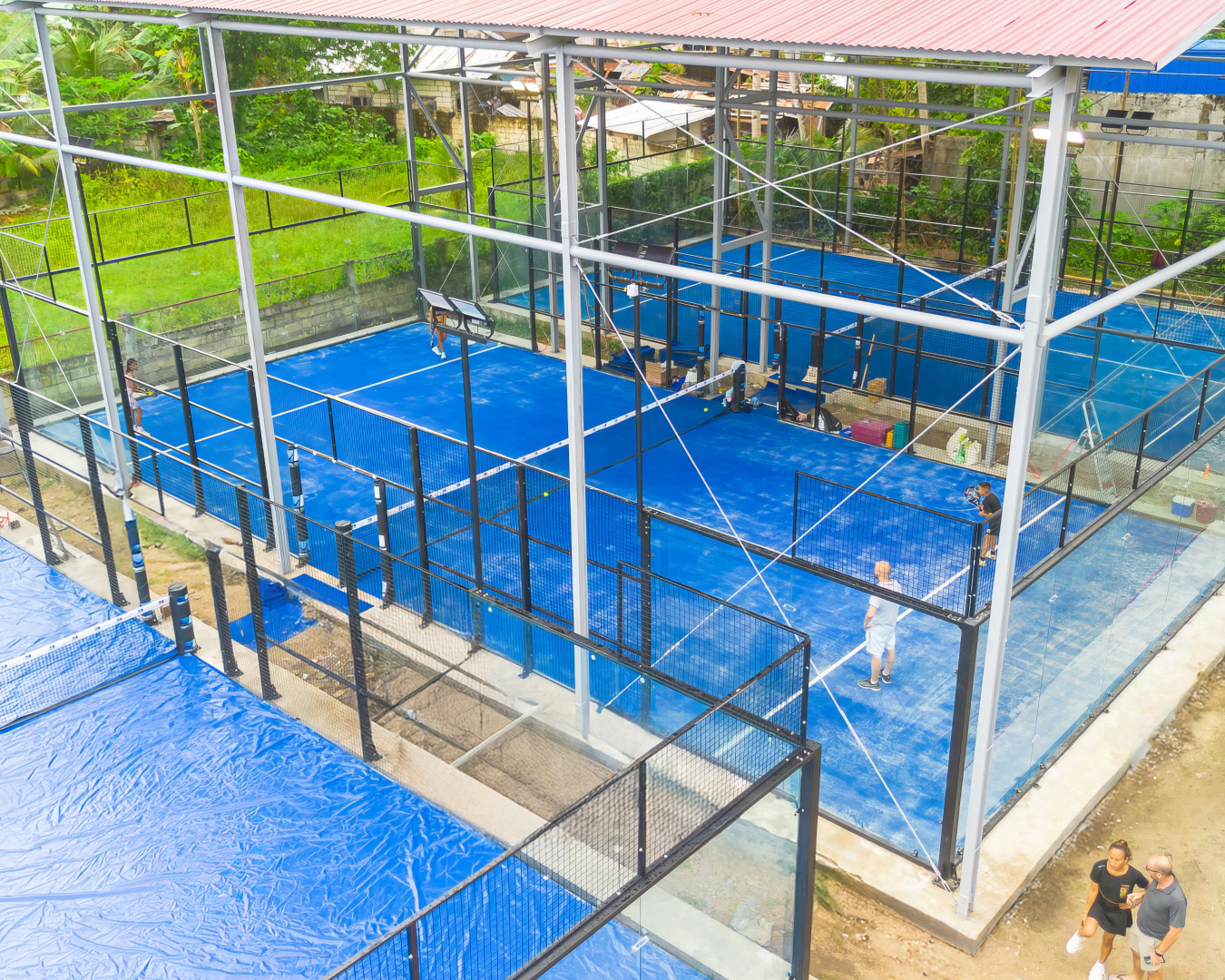
What Are the Dimensions of a Padel Court?
- The full court dimensions are 10 meters wide by 20 meters long
- The playing area is enclosed with glass walls and metal mesh fencing, forming a metal cage
- The surface is synthetic turf, offering great grip and bounce
- The net sits at 88 cm in the center and 92 cm at the sides
- There are two service boxes on each side of the court
The entire playing field is designed to encourage longer rallies and more dynamic action. Because players can use the walls, the game feels fluid and unpredictable and way more forgiving than the rigid lines of a traditional tennis court.
Whether you’re in a club with three padel courts or a converted space in the city, every padel court delivers the same high-energy experience.
What’s the Difference Between Padel and Pickleball?
Padel vs. PickleballIf you’re wondering about the difference between padel and pickleball, you’re not alone. Both are exploding in popularity but they’re not the same game.
| Feature | Padel | Pickleball |
|---|---|---|
| Court | Enclosed with glass walls and metal mesh | Open, no walls |
| Court Dimensions | 10m x 20m | Smaller than padel (approx. 6m x 13m) |
| Ball | Pressurized ball, similar to tennis | Plastic wiffle-style ball |
| Racket | Solid padel racket with no strings | Paddle, often composite or plastic |
| Serve | Underarm, must bounce in service box | Underhand, diagonal serve |
| Gameplay Style | Strategic, long rallies, wall bounces | Quick points, minimal wall play |
| Typical Vibe | Social sport with club-style energy | Casual, backyard-friendly |
The biggest difference?
In padel, the court is enclosed. You can hit the wall and stay in play. That changes the game and the fun entirely.
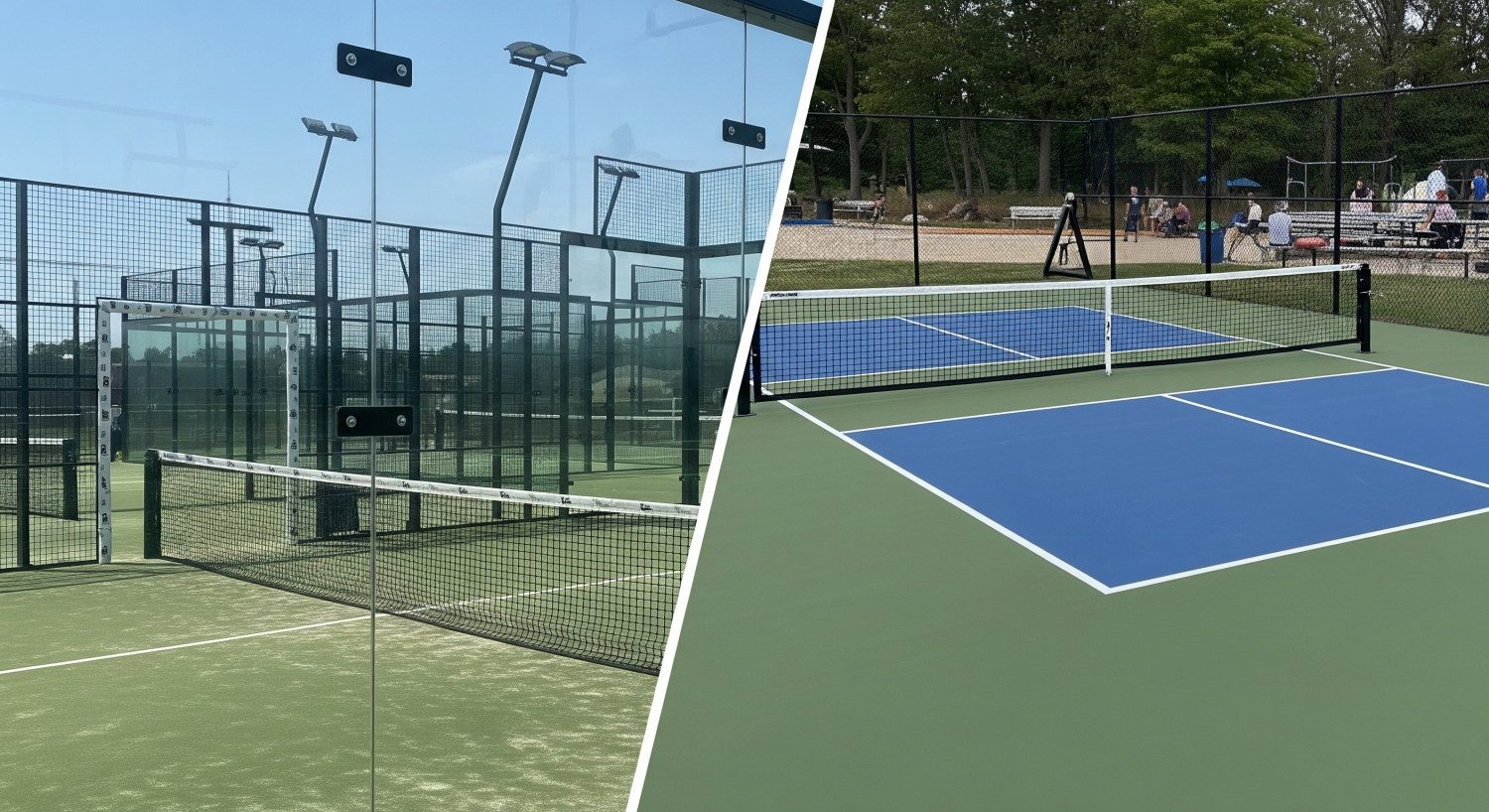
Pickleball is easier to set up anywhere. But padel delivers a more immersive experience that feels like a true racket sport. Fast, social, and surprisingly tactical.
Why Should You Start Playing Padel?
Play NowPadel isn’t just trending, it’s taking over. With over 25 million players worldwide, and new padel courts opening every day, there’s never been a better time to start playing.
Whether you’re a seasoned tennis player or a complete beginner, padel offers something rare in the world of sports: instant fun, social energy, and constant growth.
And with the International Padel Federation leading the charge, the game is more accessible, inclusive, and globally connected than ever.
So grab a padel racket, rally your friends, and book a court.
And if you happen to be in the Philippines, especially in Bohol, grab your racket and come visit Bohol Padel Club or reserve your spot here.
It’s the first in the province and one of the pioneers in the country, offering an exciting way to experience this global sport, island-style.
The walls are waiting, the rallies are longer, and the fun is just getting started.
Game on.
